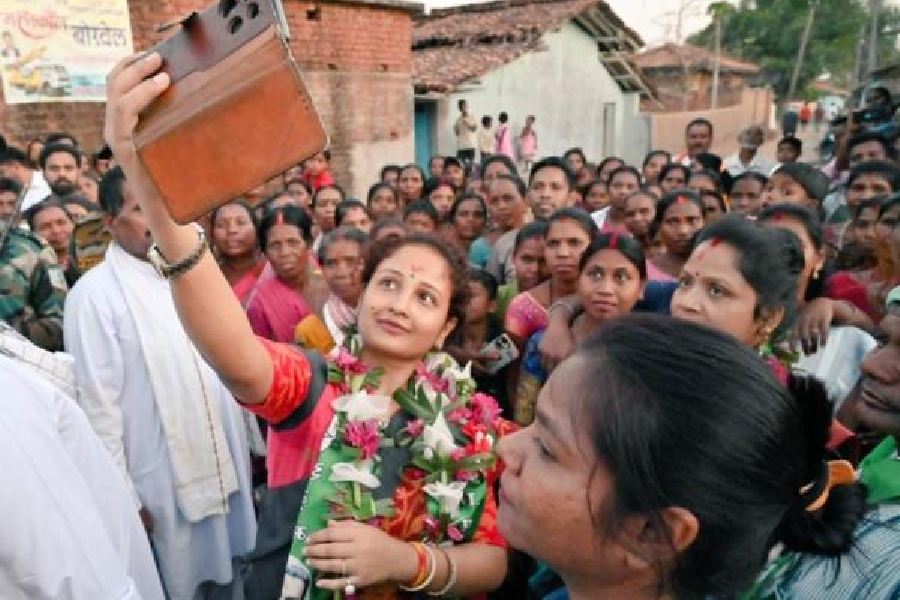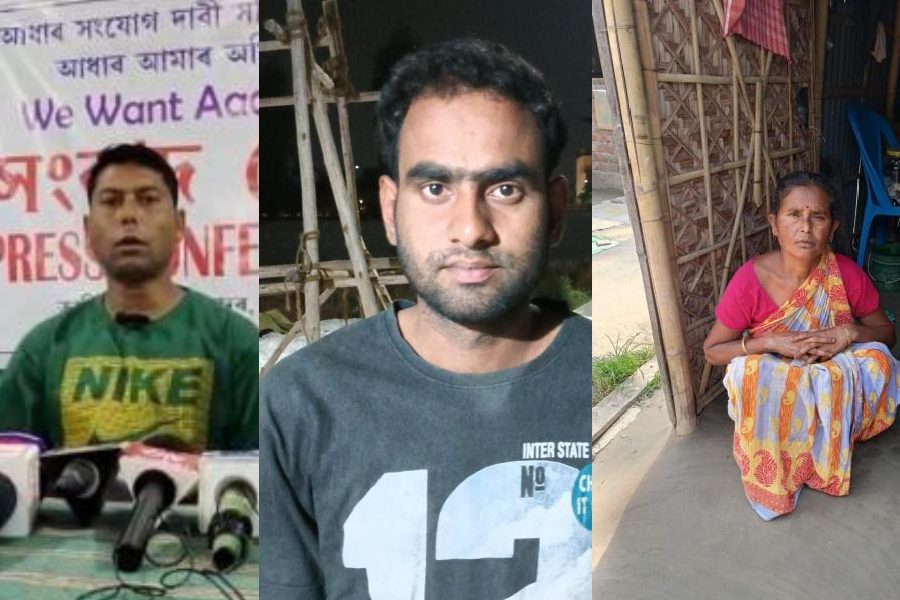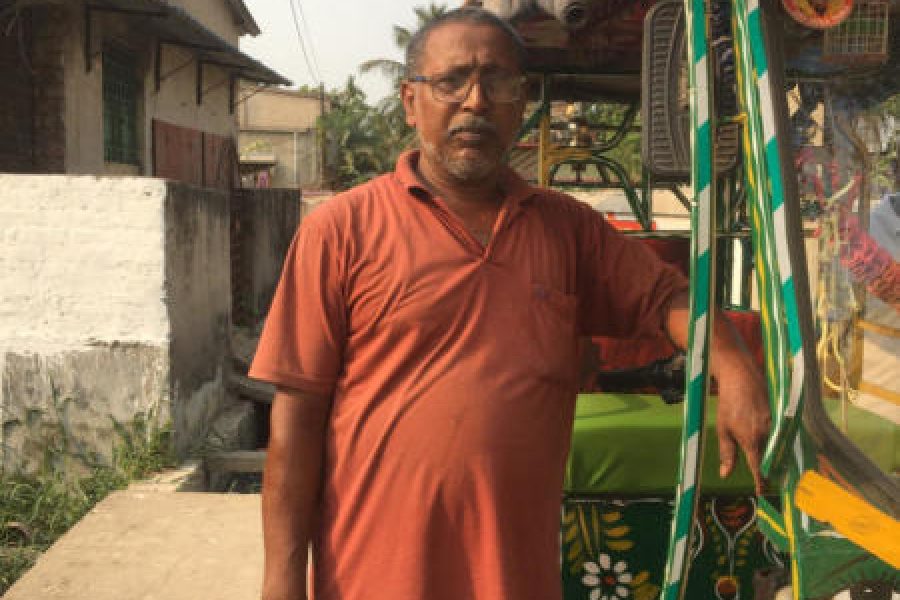Fourteen years after her debut directorial Dhobi Ghat, Kiran Rao returns to the director’s chair with Friday film Laapataa Ladies. Co-produced by Aamir Khan, the slice-of-life satire takes a scathing look at patriarchy but softens it through the lens of humour. A Telegraph chat with Kiran.
You picked an unusual promotional strategy for Laapataa Ladies, showing it to audiences across the country much before the film was released. What have people been telling you?
The reactions have been heartwarming and reassuring. It has been wonderful to share the film and have this kind of assurance beforehand. The best compliment was someone telling me that the film ‘felt like a warm hug’. To create that kind of emotion is a huge compliment for a filmmaker. The screenings have given us hope and that is the best assurance one can get... when you hear audiences laugh and clap and compliment you after the film.
Wasn’t there any apprehension in opening up your film to so many people before release?
Honestly, it was Aamir’s (Khan, co-producer) idea. He is very confident about the film. Like every filmmaker, I have my insecurities and neuroses and till the last minute, I felt I could change things in the film (laughs).
We got a lot of confidence after showing the film at TIFF (Toronto International Film Festival) because the audience there loved it so much. I was reassured by that. But it has also been nerve-wracking.
Laapataa Ladies has been made for audiences to enjoy. It is a comedy. It will endear itself to viewers unless there is an odd someone out there who hates feel-good films. You may not love the film, but it is unlikely that you will hate it. I am happy we have done these screenings because nothing beats word-of-mouth (publicity). I think Aamir’s idea was a stellar one.
It has been more than a decade since your debut feature Dhobi Ghat. As we approach release day, are you feeling the nerves?
Totally! The world has changed in the last 14 years. There are so many reasons why the audience doesn’t get up and go to the cinema on a Friday. I am hoping that people know that the film is in cinemas on March 1, that they will turn up and hopefully like it enough to tell others to go and see it. I have a full case of nerves! (Laughs)
Most people who know me well describe me as a livewire and I have a lot of excess energy. Now that is even more because of all the nervousness!
When you first heard the story, did it also feel like a warm hug to you?
I read the story that Biplab Goswami had written and I loved it! It was largely the story that we have today and it had most of the things that we wanted to talk about in the film. More than a warm hug, it felt like a sigh of relief because I had been searching for a story to direct for seven-eight years. When I heard it in 2018, I instantly knew this was going to be my next film.
We went on to develop it and convert it into a bit more of a comedy than the drama that it originally was. We added more characters and emotion to it. But the heart of the film is still what Biplab had written. It was then called ‘Two Brides’ and was a screenplay that won the second prize at a competition that Aamir was on the jury of.
Did you always want to name it Laapataa Ladies?
We liked ‘Two Brides’ but felt that it needed to be a Hindi title. Many ideas were put into a WhatsApp group that included those involved in the film. It ranged from ‘Ghoonghat ki aad mein’ to ‘Ghoonghat’ to ‘Do Dulhan’... we tried all possible versions of ‘Two Brides!’ Finally, our producer Tanaji (Dasgupta) came up with Laapataa Ladies. The second we heard it, everyone was like: ‘Register it right away!’ It instinctively felt correct because it said so much about the film.
You shot on real locations. That must have come with a whole set of challenges...
One of the biggest challenges was planning the train shoot because, as you said, we shot on live locations. Added to that was shooting in active railway stations with 200 extras during the onset of Omicron. It has been one of the hardest things I have dealt with. Many people got Covid during the shoot and I had to recast people, including some lead actors, overnight.
I did have apprehensions about being on set, calling ‘action’ and ‘cut’ and being a director again. But those misgivings were quickly put to rest. It is like cycling... you may be out of practice but you don’t forget how to do it.
I had done enough prep, recce and rehearsals with the actors. We had storyboarded scenes. But nothing prepares you for that moment on set when everybody is looking at you and waiting for you to call the shots. But I realised how much I love it and that I am pretty okay at it (smiles).
Your three leads — Sparsh Shrivastava, Nitanshi Goel and Pratibha Ranta — are such naturals and their performances give the impression that they have been born into and raised in that milieu...
They are very good! They come from different acting backgrounds... television, web series and even social media. Nitanshi had two million followers (on Instagram) even before we cast her!
I instinctively knew the pitch at which I wanted to have their performances. A story like this could easily become melodrama or slapstick but there was a particular school of acting that I wanted to achieve. To do that took readings, freewheeling chats and specific work with certain actors on dialect and getting into their characters. So on set, it became much easier.
Comedy is about tone, pitch and timing. I wanted them to be relaxed enough on set to bring out that magic. Between the actors doing a wonderful job and Jabeen Merchant’s sharp editing, we managed to make the performances pop.
Was humour the route you always wanted to take?
Yes. I felt that the original story could benefit from humour because of its heavy theme. I felt this could be a story of hope, joy and optimism. I wanted the tone to shift a little towards that rather than purely be in the realm of realism.
We all respond to comedy. It softens our barriers to ideas and opens up space for conversations. Laughter brings us closer. Rather than being on the nose, I thought humour would make the audience accept certain ideas and warm to certain themes.
Humour is a magic wand that transforms things that are difficult to swallow. An example is Life is Beautiful (1997) where one of the darkest experiences of humankind (World War II) is tempered with warmth and humanity and brings on a laugh and tear at the same time. That is a wonderful thing to do through a story.
There are a lot more women on set now but is a female director still looked on as an anomaly?
I don’t think so, at least not in the Hindi film industry or the OTT world. In fact, as directors, we are finding a lot more space than women in other departments like production, cinematography or writing, in which I think we need more female representation.
People no longer find it hard to take directions from a woman, which was the case even 10-15 years ago. I have experienced bro gangs where you do feel a little intimidated to call the shots, even when you are the first AD (assistant director). But that landscape has changed considerably. Of course, there is a long way to go, but we are no longer an anomaly.
Are you critical of your work?
I am highly critical of my work. I find it hard to let go. But I have come to love most of Laapataa Ladies even through what I used to consider flaws. It has become like a child whose flaws you begin to love. But I am quite hard on myself. Which is probably why I haven’t been able to make a film in 12-13 years.
You spent your formative years in Calcutta and studied in Loreto House and La Martiniere for Girls. How has growing up in this city informed and influenced the person that you are?
Calcutta had a deep impact on me growing up. I come from a middle-class family and we didn’t have many toys or clothes growing up. But it was a city that valued the mind, it valued ideas. I always had access to books, theatre, music and sports. So I didn’t have as much of a sense of money and whether being wealthy was in some way aspirational. It wasn’t for me.
Calcutta made me a very different person than what I would have been growing up anywhere else. I love the city and I am grateful for the chance to grow up there.










